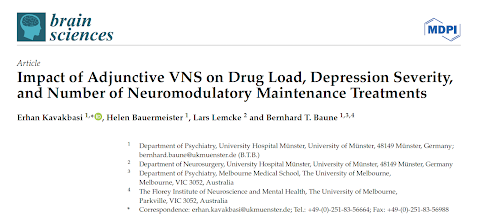There were two new ECT articles published yesterday (Feb. 4) on PubMed:
The Role of Electroconvulsive Therapy in the Treatment of Severe Bipolar Mixed State
Perugi G, et al. Psychiatr Clin North Am 2020 - Review. PMID 32008684
The first, Perugi et al., is an important addition to the literature. It provides a comprehensive review of the data about the utility of ECT for the treatment of severe bipolar disorder, in this case, for mixed episodes.
They make several key points:
-mixed states are difficult to diagnose
-longer episode duration predicts poorer response, so leaving ECT as a "last resort" treatment option is problematic
-there is a low incidence of serious adverse effects
-ECT is a mood stabilizing treatment
There has long been a reluctance to recognize ECT as a crucial treatment for severe bipolar disorder. This group of Italian investigators, led by Medda and Perugi , has worked hard to focus a spotlight the importance of recognizing ECT as a valid treatment option for for serious bipolar disorder in all three phases of the illness (depression, mania, and mixed states.)
The second article, by Nikhil Chawla, Assistant Professor of Anesthesiology at Yale, is a brief overview of ECT anesthesia. It is aimed at anesthesia providers, and covers the basics in a mostly reasonable way, but somewhat exaggerates the cardiac risks of ECT.
As an introduction for an anesthesia provider, this is a good place to start, but it is by no means comprehensive nor authoritative. Unfortunately, neither does it adequately reference the more authoritative articles, chapters and books that have come before it. This is a welcome addition to beginning readings for new anesthesia providers, who should also read more detailed reviews of ECT anesthesia.



Comments
Post a Comment